Bapi Raju Surampudi
Momentum Boosted Episodic Memory for Improving Learning in Long-Tailed RL Environments
Apr 08, 2025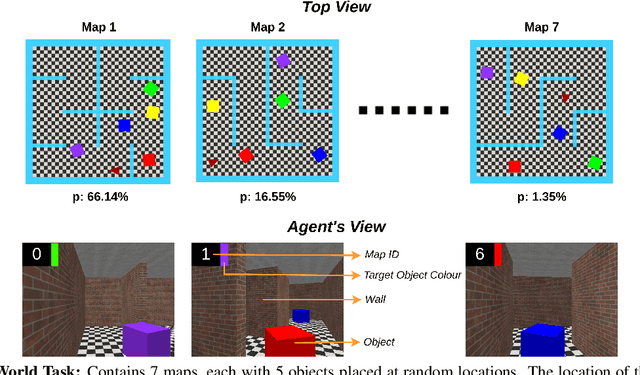
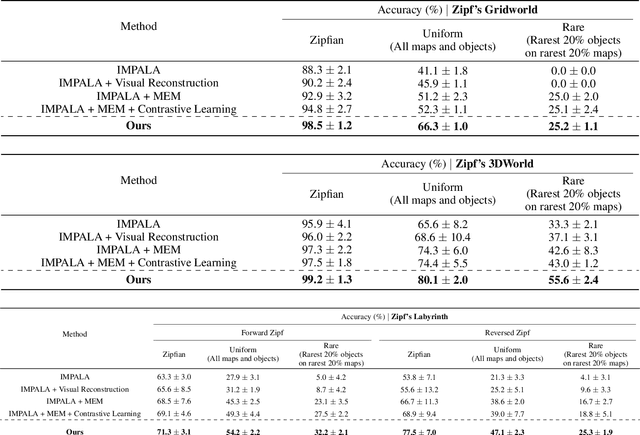
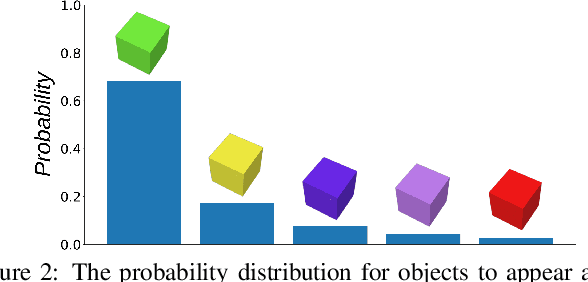
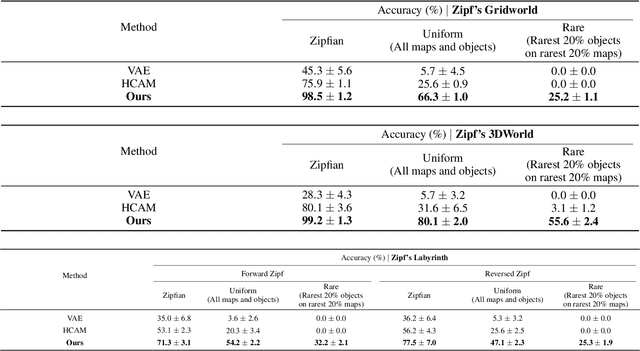
Abstract:Traditional Reinforcement Learning (RL) algorithms assume the distribution of the data to be uniform or mostly uniform. However, this is not the case with most real-world applications like autonomous driving or in nature where animals roam. Some experiences are encountered frequently, and most of the remaining experiences occur rarely; the resulting distribution is called Zipfian. Taking inspiration from the theory of complementary learning systems, an architecture for learning from Zipfian distributions is proposed where important long tail trajectories are discovered in an unsupervised manner. The proposal comprises an episodic memory buffer containing a prioritised memory module to ensure important rare trajectories are kept longer to address the Zipfian problem, which needs credit assignment to happen in a sample efficient manner. The experiences are then reinstated from episodic memory and given weighted importance forming the trajectory to be executed. Notably, the proposed architecture is modular, can be incorporated in any RL architecture and yields improved performance in multiple Zipfian tasks over traditional architectures. Our method outperforms IMPALA by a significant margin on all three tasks and all three evaluation metrics (Zipfian, Uniform, and Rare Accuracy) and also gives improvements on most Atari environments that are considered challenging
HyperGALE: ASD Classification via Hypergraph Gated Attention with Learnable Hyperedges
Mar 21, 2024Abstract:Autism Spectrum Disorder (ASD) is a neurodevelopmental condition characterized by varied social cognitive challenges and repetitive behavioral patterns. Identifying reliable brain imaging-based biomarkers for ASD has been a persistent challenge due to the spectrum's diverse symptomatology. Existing baselines in the field have made significant strides in this direction, yet there remains room for improvement in both performance and interpretability. We propose \emph{HyperGALE}, which builds upon the hypergraph by incorporating learned hyperedges and gated attention mechanisms. This approach has led to substantial improvements in the model's ability to interpret complex brain graph data, offering deeper insights into ASD biomarker characterization. Evaluated on the extensive ABIDE II dataset, \emph{HyperGALE} not only improves interpretability but also demonstrates statistically significant enhancements in key performance metrics compared to both previous baselines and the foundational hypergraph model. The advancement \emph{HyperGALE} brings to ASD research highlights the potential of sophisticated graph-based techniques in neurodevelopmental studies. The source code and implementation instructions are available at GitHub:https://github.com/mehular0ra/HyperGALE.
Neural Language Taskonomy: Which NLP Tasks are the most Predictive of fMRI Brain Activity?
May 03, 2022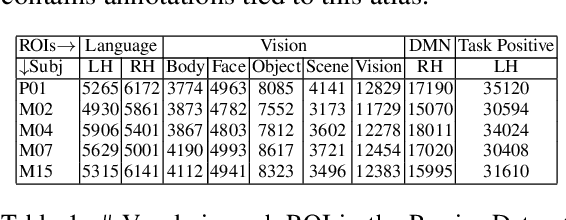
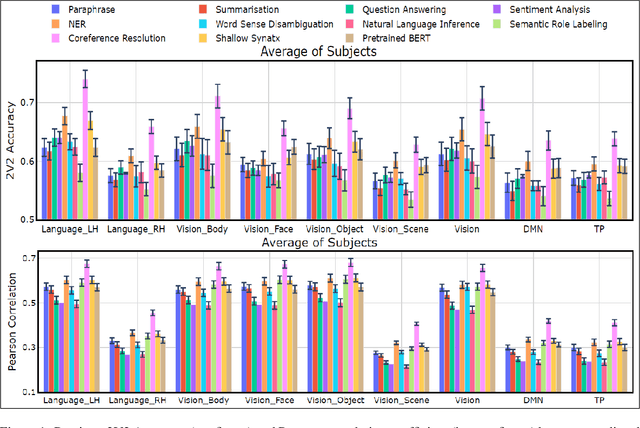
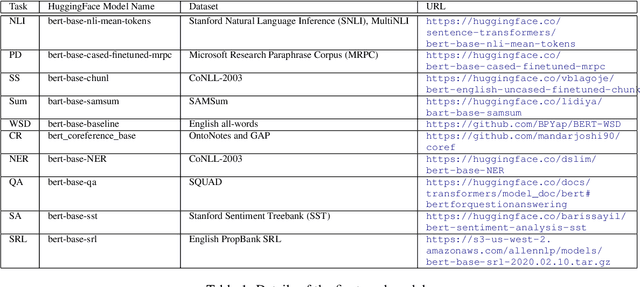

Abstract:Several popular Transformer based language models have been found to be successful for text-driven brain encoding. However, existing literature leverages only pretrained text Transformer models and has not explored the efficacy of task-specific learned Transformer representations. In this work, we explore transfer learning from representations learned for ten popular natural language processing tasks (two syntactic and eight semantic) for predicting brain responses from two diverse datasets: Pereira (subjects reading sentences from paragraphs) and Narratives (subjects listening to the spoken stories). Encoding models based on task features are used to predict activity in different regions across the whole brain. Features from coreference resolution, NER, and shallow syntax parsing explain greater variance for the reading activity. On the other hand, for the listening activity, tasks such as paraphrase generation, summarization, and natural language inference show better encoding performance. Experiments across all 10 task representations provide the following cognitive insights: (i) language left hemisphere has higher predictive brain activity versus language right hemisphere, (ii) posterior medial cortex, temporo-parieto-occipital junction, dorsal frontal lobe have higher correlation versus early auditory and auditory association cortex, (iii) syntactic and semantic tasks display a good predictive performance across brain regions for reading and listening stimuli resp.
 Add to Chrome
Add to Chrome Add to Firefox
Add to Firefox Add to Edge
Add to Edge